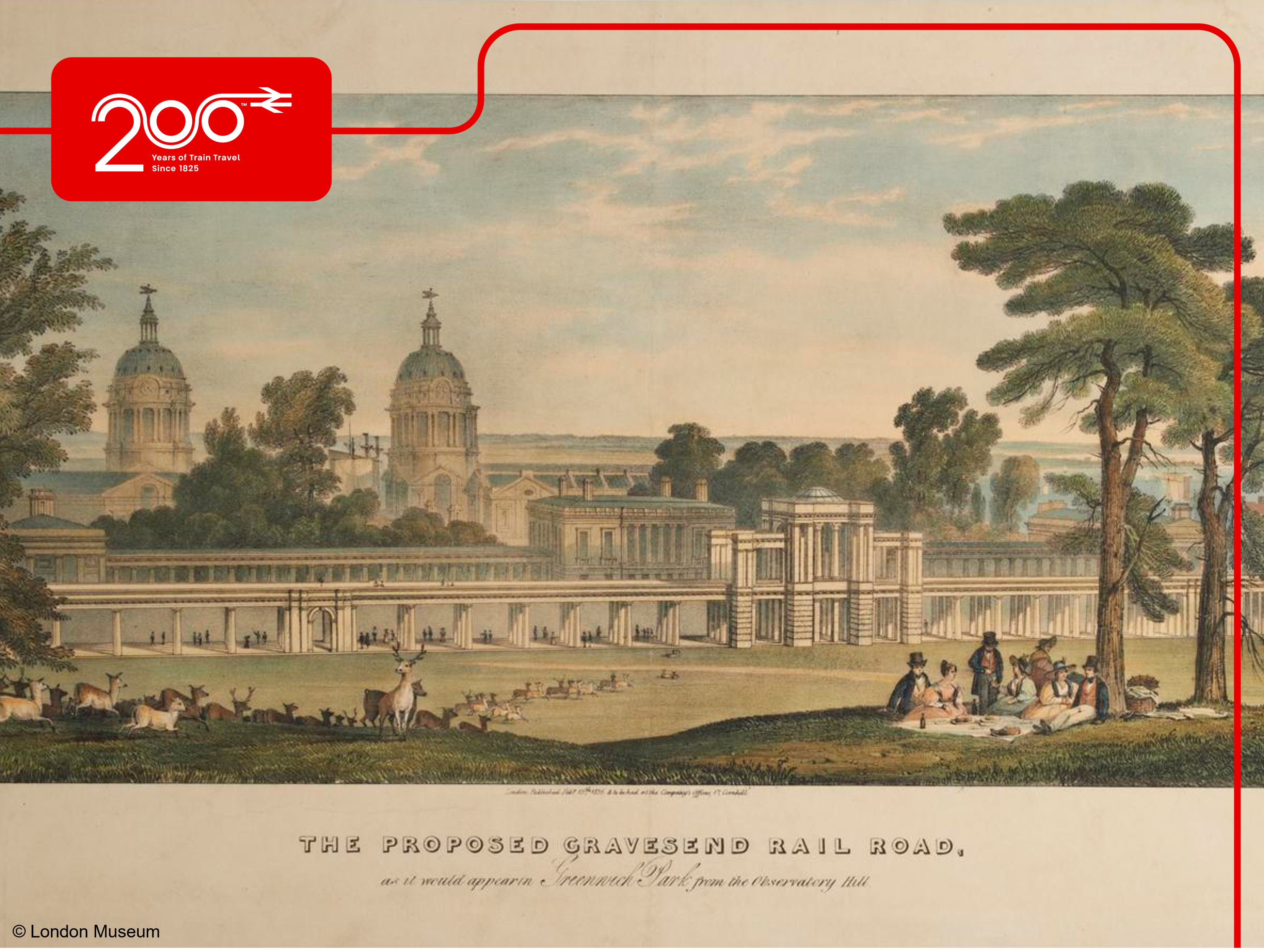Image - The Proposed Gravesend Rail Road. As it would appear in Greenwich Park from the Observatory Hill. Digital image © London Museum
Welcome to the next instalment of our Railway 200 celebrations! Today we will focus on the links between maritime history and railways in relation to the collections and histories held at Royal Museums Greenwich, an institution comprised of four distinct sites: the National Maritime Museum, the Queen’s House, the Royal Observatory, and the tea clipper Cutty Sark - a member of the National Historic Fleet.
The links between Royal Museums Greenwich and railways can be traced back to the 1700s and John Harrison’s marine chronometers. The Royal Observatory in Greenwich built a reputation for navigation and astronomy and played a pivotal role in ensuring that seafarers had access to accurate time keeping. From 1821 it was also the site used for testing marine chronometers for the Royal Navy, and in 1833, a little over a decade later, the Greenwich Time Ball was installed at the top of Flamsteed House, so ships could set their clocks to the Greenwich time before they left for their long voyages. This period in history also saw the steady development of railway networks across the country. Just like shipping, accurate time keeping was needed to coordinate the growing network. By the 1840s, all railways began operating their timetables based on Greenwich Mean Time, instead of each town and station working under their local time. Passengers travelling from Margate to Penzance no longer needed to adjust their clocks upon arrival.
London Bridge station opened in 1836 and the London - Greenwich railway line of the London, Chatham, and Dover Railway Company became London's first suburban railway. Originally it terminated at a temporary station in Greenwich, which was converted into a permanent brick station in 1840. A proposal to extend this line past Greenwich and into Kent was put forward in the 1830s, but this vision wasn’t realised until 1878 when the underground tunnel leading under the lawns on the north side of the Queen’s House from Greenwich Station to Maze Hill was opened. Documents from 1835 held at the RMG archives and in other collections show a planned, but never executed, viaduct leading across Greenwich Park to extend the line, with the railway line running just south of the Queen’s House.
Last but not least, the Museum collections hold many objects which will be more familiar and recognisable to a modern audience, such as the waterline model of the Venturer (1958), an early example of a modern container ship. The link between railways and this object might not be immediately obvious, but once we look closer at the model it will become clear: the containers are railway carriages! This model of an early container ship shows only 16 containers on the upper deck, while her more modern sisters can carry hundreds of them (and are no longer restricted to the availability of railway carriages, either!). The second obvious connection to railways comes from the colours of her funnel: two decades after she was built for the British Transport Commission the organisation split, and Venturer became part of Sealink which ran ferry services for British Rail. Eventually, Venturer was sold off and renamed Sunshine One. At present she is thought to work as a cargo ship outside of the UK.
That's it for today! Hope you celebrate tomorrow for Rail's 200th Anniversary

